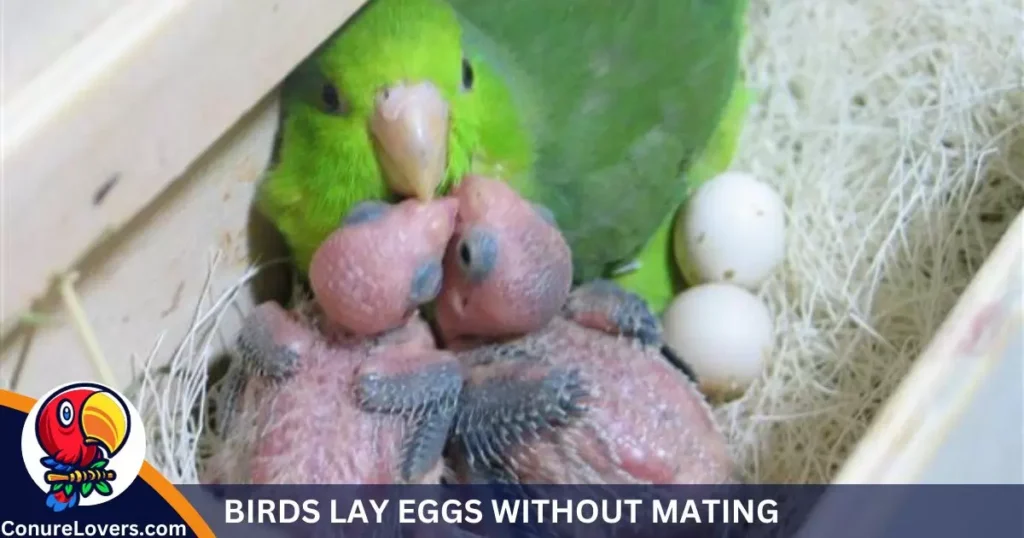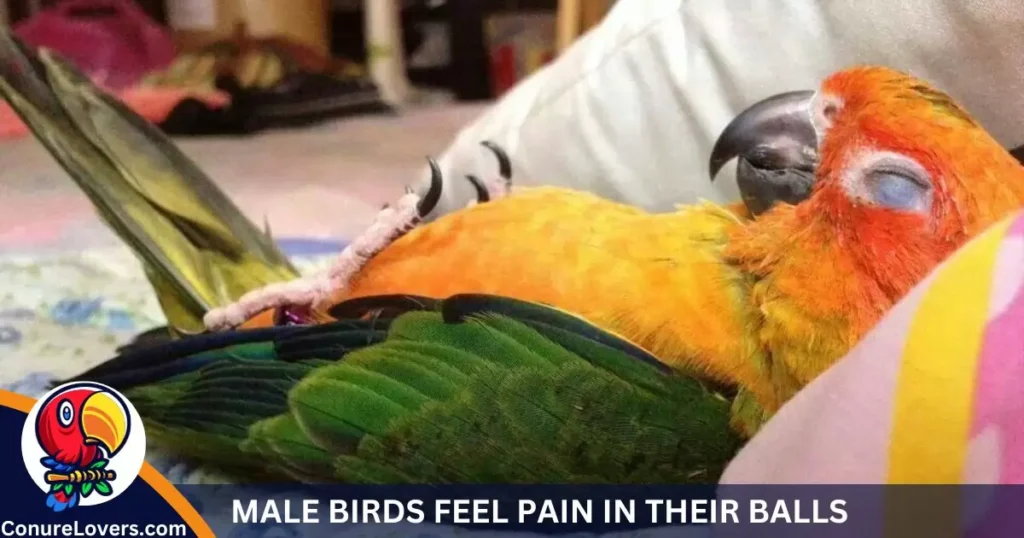Hey there! Birds, like many other animals, have special parts for making babies called gonads. Now, in guy birds, like MALE BIRD, these gonads are called testes, and they make the sperm. But here’s the cool part – these bird testes aren’t tucked inside their bodies like in mammals.
Instead, they hang out near the kidneys or in the belly. The size and shape of these bird testes can be different depending on the bird type. Sometimes, they’re tiny and kinda tricky to spot.
So, the big question is: Do male birds have, you know, balls ? Well, it’s a bit different from mammals. No hiding inside the body for these bird jewels.
Ready to dive into more birdy details? Let’s go!
DO BIRDS HAVE BALLS INSIDE
Here’s a more accessible and informal version:
Hey bird enthusiasts! So, here’s the scoop on bird anatomy – they don’t have traditional testicles like us humans. Nope, they’ve got these small, flat things called testes, tucked inside near the kidneys. They make sperm, but it’s not like in mammals where they drop into a sac.
Now, get this: many birds skip the whole penis thing. Instead, they go for what’s called “cloacal copulation.” Basically, the male and female birds get close and press their cloacae (that’s the spot for both business and pleasure) together to share some sperm action.
Nature’s way, right? Ready for more birdy tales?
DO BIRDS HAVE VIGINA

So, birds don’t have a regular vagina like mammals do. Take, for instance, our friends, the white pigeons. Instead, female birds have an opening called the cloaca, pulling double duty for both going to the bathroom and making babies.
Now, when it’s time to get romantic, the male bird’s cloaca buddies up with the female’s cloaca, making way for some sperm action. Some birds, though, have a special baby-making tract called an oviduct in the female. It’s where the egg gets fertilized and grows before being laid, but it’s not a vagina.
And, of course, we can’t forget the burning question: Do male birds have those infamous “balls”? Let’s dive into that juicy topic next!
DO BIRDS HAVE NIPPLES

Hey bird buddies! Unlike us mammals, birds don’t roll with the whole nipple scene. Nope, no lactating action going on. They’re not equipped to whip up and squirt out milk like we do.
So, how do these feathered parents feed their little ones? It’s not a milky affair; instead, they opt for a more hands-on (or beaks-on) approach. Picture this: Mama or Papa bird brings food and then, voila, regurgitates it for the chicks. A bit different from our mammal-style nursing, right?
Now, some bird species, like pigeons and doves, have these little bumps on their skin called “papillae”. These bumps might look like they’re in the nipple business, but they’re more about getting the chicks excited for a meal. Not quite the same as our trusty nipples.
Curious to know more bird quirks? Let’s keep the bird facts coming!
DO BIRDS GET PERIODS?
Time for a fascinating fact: Birds don’t go through what mammals do with those monthly menstrual periods. See, mammals, like us, shed the lining of their uterus if there’s no baby on the way. But here’s the kicker – birds don’t have a uterus.
Instead, they’ve got this cool thing called an oviduct in their reproductive toolkit. It’s where the egg gets its start and, if they’re in the mood for parenting, where it gets fertilized. Their egg-laying game is under the control of the hormonal squad, making it a different deal from mammal-style menstruation.
So, in bird world, there is no connection between egg-laying and periods like in us mammals. Nature sure has its unique twists, doesn’t it? Ready for more bird tales?
DO BIRDS LAY EGGS WITHOUT MATING?

Here’s a mind-blowing bird fact: Some feathered friends can actually lay eggs without the whole mating dance. It’s called parthenogenesis, a fancy term for asexual reproduction. In this birdy process, the egg turns into an embryo all on its own, no need for a sperm rendezvous.
Now, don’t go expecting this in every bird species – it’s a rare trick. Birds like chickens, turkeys, ducks, and geese are the cool ones that can pull off parthenogenesis. And here’s the kicker: the eggs they lay this way don’t turn into cute little chicks. Nope, it’s a ladies-only party – only female offspring come out to play.
Nature’s got some wild moves, right? Ready for more bird wonders?
IS IT PAINFULL FOR BIRDS TO LAY EGGS?
Ever wondered if our feathered friends feel pain while laying eggs? It’s a bit of a mystery because birds have a different setup in the nerve and physiology department compared to mammals.
Here’s the scoop: Birds likely don’t experience pain during the egg-laying gig. Their nerve receptors in the reproductive tract march to a different beat, not exactly registering pain the way mammals do. Plus, birds don’t go through the same hormonal and physiological responses to pain.
Now, let’s keep it real – laying eggs might bring some discomfort or stress, especially if a bird has a health issue in their reproductive tract. It can also zap their energy and minerals, leaving them a bit weak and tired temporarily.
But here’s the crucial part: Birds are wild beings, and respecting their natural ways is key. It’s best not to mess with their egg-laying groove unless it’s for their health or survival.
DO MALE BIRDS FEEL PAIN IN THEIR BALLS?

Let’s tackle a curious question: Do male birds feel pain in their ahem “**private parts**” during the mating dance? Well, here’s the deal – male birds, unlike us humans, don’t have external testicles or “**balls**.” So, no pain in that department!
Now, diving a bit deeper into bird anatomy: their reproductive system is inside their bodies, and they’ve got receptors and nerves in there. But, here’s the twist – there isn’t solid proof that birds feel pain during mating.
With the bird kingdom’s evolutionary perks, they’ve become pros at quick and efficient reproduction. But imagine if pain tagged along during the mating rendezvous – that’d throw a wrench in their love lives, right?
However, when it comes to reproduction, birds can feel discomfort or pain in other body parts like feathers, beaks, and feet. This might lead to issues like feather loss, and you might have seen that infamous snapshot of a naked owl making the rounds on the internet. Stress, boredom, or illnesses can be the culprits.
Birds also go through a fashion makeover – it’s called molting, shedding old feathers for new ones. This process can make them a bit uncomfortable.
Now, if you’re ever concerned about your feathered friend’s health or happiness, it’s always a good idea to reach out to a bird-savvy veterinarian. They’ve got the birdy expertise!
WHICH MALE BIRDS LAY EGGS

Let’s clear up a common myth: Male birds don’t lay eggs. Nope, in the bird world, it’s the ladies who take charge of the egg production and laying game. They’ve got these special baby-making lanes called oviducts where eggs are crafted and then laid. Guys? Well, they’re not equipped with the goods to produce eggs.
Now, here’s a fascinating twist: In some bird species, both moms and dads chip in for babysitting duty. Take certain penguins, for example – the guys are on incubation duty while the females head to the sea for a snack, then they switch roles.
And there’s more! Some male birds have evolved a nifty trick called a brood patch. It’s a spot on their chest or belly with bare, super vascularized skin. This patch helps keep the eggs toasty warm while the females take care of other business.
But here’s the real deal: Birds have a whole different game plan for reproduction compared to mammals. Males aren’t just in charge of fertilizing eggs; they’ve got a whole repertoire, from courtship displays to building nests and defending their turf.
Read More: Mexican Green Conure (Everything You Need to Know)
DO MALE BIRDS HAVE INTERNAL TESTICLES
Let’s dig into the fascinating world of bird anatomy. So, here’s the lowdown: Most male birds do indeed have internal testes. These little guys typically hang out near the flattened organs close to the small kidneys. Unlike mammals, there’s no scrotal sac in the bird business.
So, if you’ve been wondering, “Do male birds have balls?” – the answer is a solid yes. But here’s the kicker: birds don’t rock a scrotum like mammals do. Instead, their testes cozy up internally, usually near the kidneys, doing their job of producing sperm for the grand task of fertilizing eggs during reproduction.
Now, this internal arrangement has a cool perk – the temperature inside the bird’s body stays pretty steady, which is perfect for cooking up and preserving sperm.
But, hold on – in some bird species, especially those living in more extreme environments, the testes might set up shop in the abdominal cavity close to the body core, where things are a bit warmer. Penguins are the cool kids in this scenario – their testes hang out in the abdominal cavity all year round, and they can even move them closer to the body core for extra warmth in chilly environments.
SIGNS OF BIRD MATING
Let’s talk about the romance in the bird world. During the mating season, many bird species pull out all the stops with some serious courtship rituals.
Picture this: Birds go through a series of moves to find that perfect partner and establish a connection. It’s like the bird version of a love dance!
Now, what’s in this dance? Well, there’s a show of fancy plumage, some melodic vocalizations, and even some snazzy physical movements. It’s like they’re putting on a whole performance to impress each other.
Why is this courtship stuff so important? It’s like a dating game for birds. It helps them find a compatible mate, and that’s a big deal for successful reproduction. So, the better the courtship, the higher the chances of cute little bird babies.
And let’s talk about the showstoppers – male peacocks. These guys take it to the next level with their elaborate displays, fanning out those vibrant tail feathers to catch the eye of the ladies. Talk about a grand entrance!
But it’s not just peacocks – male birds, in general, might pull off some aerial acrobatics or dance-like moves to dazzle the females. And guess what? Females aren’t shy either. They might join in with a little singing or flaunting their own stylish plumage.
ROLE OF PLUMAGE AND SONG IN BIRDS LOVE
When it comes to bird romance, there are two key players in the game: plumage and song.
Check this out: Male birds often flaunt some seriously vibrant feathers or unique patterns to turn the heads of the ladies. Take male cardinals, for instance – they’re rocking those bold, attention-grabbing bright red feathers. It’s like their way of saying, “Hey there, ladies, check me out!”
But it doesn’t stop there. Male birds are also musical maestros. They use their tunes to woo potential mates and mark their territory. Picture this: certain birds boast intricate songs, and they use these melodies as their version of sweet talk during courtship.
Let’s talk about the American goldfinch – during the breeding season, the male goldfinch transforms with stunning bright yellow feathers. It’s like he’s donning his best suit for the ladies.
And then there’s the mockingbird – a true songster in the bird world. The male mockingbird busts out a complex song that’s basically his way of saying, “Hey, ladies, listen up!
IMPACT OF CLIMATE CHANGE ON BIRD MATING
Guess what? Climate change is shaking up the world of bird romance!
Yep, our feathered buddies are feeling the impact. The shifts in temperature and rainfall are throwing a curveball at a bunch of bird species. It’s like a remix of their usual routines.
Here’s the scoop: Climate change is playing with their breeding seasons and messing with their migration plans. Take, for instance, some birds deciding to lay their eggs earlier because things are heating up.
And get this – some bird species are on the move, heading further north where it’s getting warmer. It’s like a grand adaptation dance to cope with the changing temperatures.
Birds are like the weather experts of the animal kingdom, adjusting their love lives to the tunes of climate change. Nature’s always full of surprises, right? Ready for more climate-changed bird tales?
FINAL WORDS
Hey bird enthusiasts! Let’s dive into the fascinating world of bird reproduction. Male birds indeed have specialized balls, known as testes, responsible for cooking up that essential ingredient called sperm.
But here’s the twist – these avian testes aren’t chilling inside a scrotal sac like in mammals. Nope, they’ve got their own VIP spot near the kidneys or in the abdominal cavity, depending on the bird species.
The article didn’t stop there – it spilled the beans on other bird reproductive quirks. No traditional vaginas, no nipples, and no bird menstruation. Plus, there’s the rare bird phenomenon of laying eggs without the whole mating dance through parthenogenesis.
But here’s a mystery – do birds feel the pain when laying eggs? The article points out the uncertainty, given the unique nervous system and physiology of our feathered friends compared to mammals.
Important to note: Birds have their own playbook when it comes to reproduction. Their strategies and physiology are different from mammals, adding a splash of diversity to life on our planet.

Matthew Porter here, your Conure Care Companion at “Conure Lovers.” Together, let’s build a harmonious and joyful space for your feathered friend. I’m here to make conure care easy and enjoyable!












